1930s
Swift Pavilion, 1939 World’s Fair
The exhibition hall for Swift's was shaped like a giant hotdog.
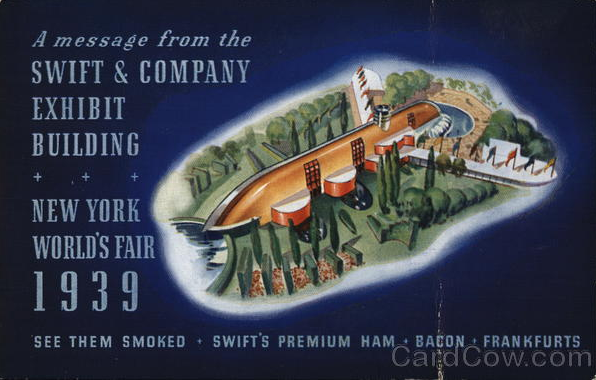


Posted By: Paul - Sat May 20, 2017 -
Comments (4)
Category: Architecture, Fairs, Amusement Parks, and Resorts, Food, 1930s
Mystery Illustration 46
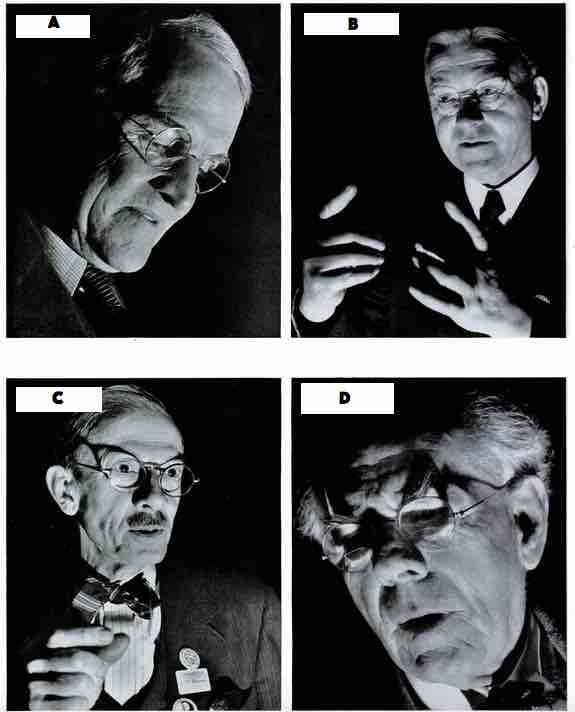
Match the men to their professions.
1) Mathematician
2) Economist
3) Psychologist
4) Entomologist
The answers are here.
And after the jump.
More in extended >>
Posted By: Paul - Wed May 17, 2017 -
Comments (6)
Category: Authorities and Experts, 1930s
Follies of the Madmen #314
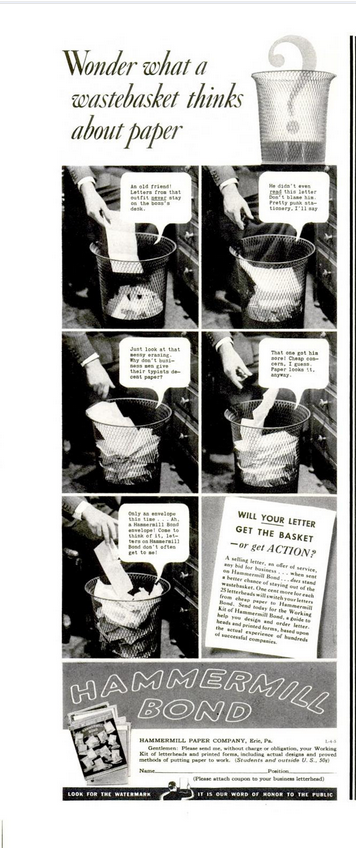
I'm just glad this was not an ad for TOILET paper.
Original ad here.
Posted By: Paul - Sun May 14, 2017 -
Comments (2)
Category: Business, Advertising, Products, 1930s
The Drivometer
A device for simulating driving, and measuring the skill of drivers, which was developed at Iowa State's Driving Research Laboratory in the 1930s.
A description of what it felt like to operate the thing. It sounds like it would have made a good arcade game. From The Dalles Chronicle - Aug 21, 1936:
Update: I think the top picture shows the 2nd version of the Driveometer, developed in the 1950s. The original version, from the 1930s, is below.

Wausau Daily Herald - Oct 26, 1937
Posted By: Alex - Tue May 09, 2017 -
Comments (4)
Category: Motor Vehicles, Cars, Science, 1930s
Groucho & Chico Go To Jail
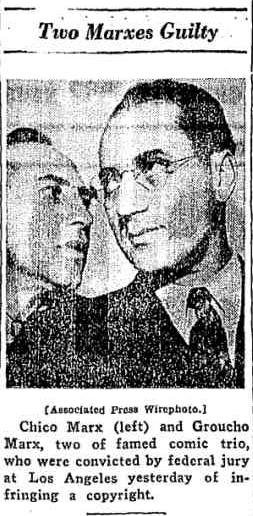

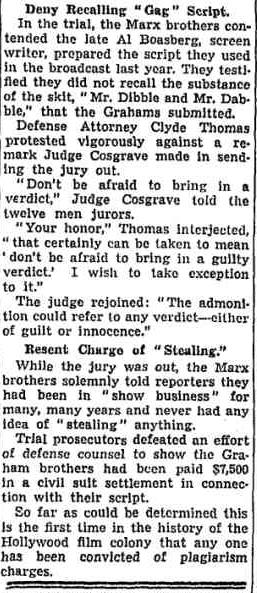
I cannot find any subsequent info on this case, which I had never heard of before. Did the Marx Bros. win on appeal? I certainly don't think they ever went to jail.
Original article here.
Posted By: Paul - Fri May 05, 2017 -
Comments (5)
Category: Crime, Humor, Comedians, 1930s
Glass Block Building: Chicago 1934

What architectural feature of this building is not visible in this picture?
Answer after the jump.
A description of the building here.
More in extended >>
Posted By: Paul - Fri Apr 28, 2017 -
Comments (2)
Category: Architecture, 1930s
The Dimple Maker
Invented by Mrs. E. Isabella Gilbert in 1936 (although I think similar gadgets had been on the market before). They came with these instructions: "Wear dimplers five minutes at a time, two or three times a day, while dressing, resting, reading or writing. Look into the mirror and laugh. There will be a semblance of a line where you should always place the dimplers until your dimples are made."According to History By Zim: "The American Medical Association argued that the 'Dimple Maker' would not make dimples or even enlarge original dimples. They also stated that prolonged use of the devise may actually cause cancer."

Louisville Courier-Journal - June 19, 1937

Battle Creek Enquirer - June 19, 1937

Detroit Free Press - Aug 9, 1936

Medford Mail Tribune - Nov 22, 1936

Newsweek - June 19, 1937

1947: Erma Schnitter models the dimple maker
Update: I was curious to know when exactly the American Medical Association denounced the Dimple Maker, since the History by Zim blog didn't mention a date. I tracked it down to 1947, when the AMA put together a collection of quack medical products that it displayed on a nationwide tour of museums.

The Philadelphia Inquirer - Jan 11, 1948
Posted By: Alex - Sun Apr 23, 2017 -
Comments (1)
Category: Beauty, Ugliness and Other Aesthetic Issues, Inventions, 1930s
Artwork Khrushchev Probably Would Not Have Liked 3
Continuing our survey of "Early Twentieth-Century Art That Might Have Irked A Soviet Premier, Based On His Explicit Disdain For Such Experimental Creations."
"In the Beginning" by Lawrence Atkinson.
Atkinson's Wikipedia entry.
An essay on Atkinson.
Posted By: Paul - Sat Apr 22, 2017 -
Comments (4)
Category: Art, Avant Garde, 1930s
Longest Sermon Ever
Back in 1937, Rev. A. Earl Lee set a record for preaching the longest sermon ever, preaching continuously for 21 hours. "He ate regular meals, preaching between bites, changed his clothes, and even took a bath while continuing the sermon by talking into a portable microphone."
Bradford Evening Star - June 29, 1937
However, it seems that world's longest sermon has been a hotly contested record. Today the record is up to 53 hours and 11 minutes. That record was set in 2014 by Florida pastor Zach Zehnder. Although it seems that he took some brief breaks for power naps. Is that allowed? Apparently so. In the video below you can watch the last 11 minutes of his sermon — and most of the rest of it is on YouTube if, for some reason, you want to sit through it.
Posted By: Alex - Fri Apr 21, 2017 -
Comments (2)
Category: World Records, 1930s
Follies of the Madmen #310
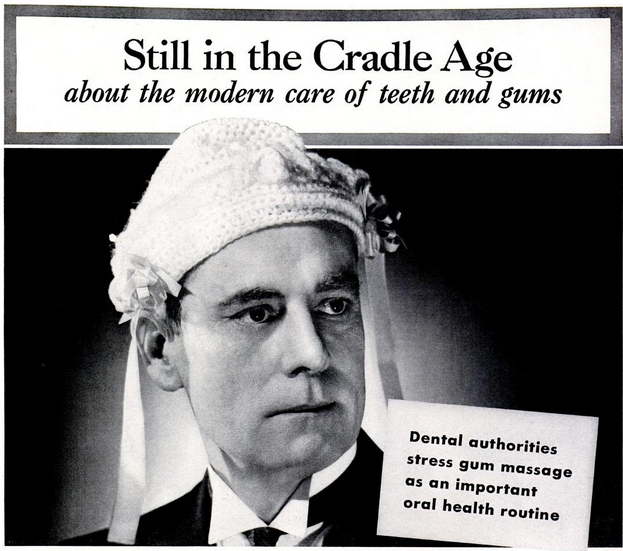
Mocking the ignorance of your desired customer: always a good move!
Original ad here.
Posted By: Paul - Sun Apr 09, 2017 -
Comments (0)
Category: Business, Advertising, Products, Hygiene, 1930s

| Who We Are |
|---|
| Alex Boese Alex is the creator and curator of the Museum of Hoaxes. He's also the author of various weird, non-fiction, science-themed books such as Elephants on Acid and Psychedelic Apes. Paul Di Filippo Paul has been paid to put weird ideas into fictional form for over thirty years, in his career as a noted science fiction writer. He has recently begun blogging on many curious topics with three fellow writers at The Inferior 4+1. Contact Us |




